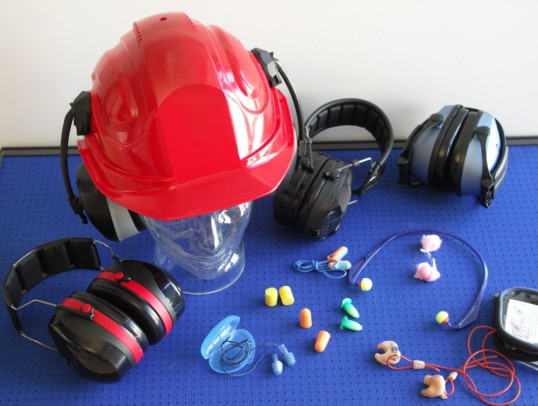German legal provisions governing hearing protectors
Irrespective of the level of noise, the German Occupational Health and Safety Act (ArbSchG) states that exposure to noise at workplaces must be avoided or reduced to the greatest possible extent. The state of the art serves here as the point of reference. If one of the upper action values of the German Noise and Vibrations Occupational Safety and Health Ordinance (LärmVibrationsArbSchV) is violated, the employer must draw up and implement a programme of technical and organizational noise control measures.
If noise exposure cannot be avoided, suitable hearing protectors must be selected. The LärmVibrationsArbSchV requires the employer to make suitable hearing protectors available to his employees when the lower exposure action values are exceeded (LEX,8h > 80 dB(A) and LpC,peak > 135 dB(C)). Once the upper action values are reached, the use of hearing protection as specified is a requirement (LEX,8h ≥ 85 dB(A) and LpC,peak ≥ 137 dB(C)).
Hearing protectors must be selected so that the limits for the permissible exposure at the user's ear are observed taking account of the sound attenuation of the hearing protector. For the residual level L’ at the ear, the following therefore apply: L’EX,8h ≤ 85 dB(A) and L’pC,peak ≤ 137 dB(C). The HML check is used as standard in Germany for calculation of the residual level at the ear. It must first be determined whether the noise at the workplace is generally of high or medium frequency (HM class) or low frequency (L class). Either the M value or the L value of the hearing protector is used accordingly as the attenuation value.
In addition, correction values for use in the field (de-rating) must be applied. These take account of the fact that the sound attenuation values measured during type examination of the hearing protector are not generally reached under industrial conditions. Besides ageing and soiling of the products, a particular reason for this is incorrect or careless fitting and/or wearing of the hearing protectors.
More detailed information on the HML check and correction values for use in the field can be found in DGUV Rule 112-194 (formerly: BGR/GUV-R 194) and DGUV Informative publication 212-024 (formerly: BGI/GUV-I 5024). This selection method also forms the basis for the IFA selection program (see below) and the IFA list of approved products found in DGUV Rule 112-194.
For earplugs that are custom-moulded to the wearer's own ear canal, both the DGUV publications and the state TRLV technical rules governing noise under the German Noise and Vibrations Occupational Safety and Health Ordinance (LärmVibrationsArbSchV, Section 6.2.3) require a function check to be performed following delivery (within six months) and thereafter at regular intervals of no more than three years. Correct fitting of the custom-moulded earplug, and thus also the sound attenuation determined in the type examination and documented in the user information for the product concerned, cannot otherwise be assured for the individual user. Comprehensive information on this topic can be found in the information module provided by the Hearing protection subcommittee within the DGUV's Personal protective equipment expert committee (download module (PDF, 56 kB, non-accessible) ).


